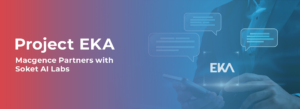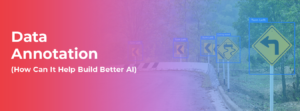- Why is computer vision training data necessary, and what does it entail?
- Advantages of Using Training Data for Computer Vision in USA
- Difficulties in Using training data for computer vision
- Kinds of training data for computer vision in USA
- Future of training data for computer vision in USA
- Why choose Macgence?
- Conclusion:
The Essence of Training Data for Computer Vision – Necessities, Advantages, and Challenges
To teach machine learning algorithms to recognize certain objects or characteristics inside pictures, computer vision training data is a crucial component at the core of this ground-breaking technology. However, what does this data include and why is it so important? We examine the importance, benefits, difficulties, and bright future of computer vision training data in this article as we dive into its nuances.
This article will discuss the need for and characteristics of computer vision training data. We will walk over the benefits and drawbacks of using training data for computer vision systems, from its critical role in improving algorithm precision to its limitations in assuring data quality. We’ll also look at the different kinds of training data that are utilized and get a preview of how computer vision training data models will develop in the future.
Why is computer vision training data necessary, and what does it entail?
A picture collection with labels is known as computer vision training data, and it is used to teach machine learning algorithms to identify particular objects or features. Usually, this data is gathered by manually labeling a sizable number of photos, after which the computer vision algorithm is trained using the labels.
Creating computer vision systems is hampered by the necessity for vast volumes of training data. Insufficient AI training data might prevent the system from picking up on the intended objects or characteristics. Furthermore, for the algorithm to correctly learn from the labels, they must be accurate.
This may be a laborious and challenging operation, particularly if the characteristics or items are little or hard to tell apart. Nonetheless, the development of dependable and precise computer vision systems depends on training data.
Advantages of Using Training Data for Computer Vision in USA

Using computer vision training data has various advantages. Initially, it has the potential to enhance the precision of algorithms.
- Computer vision training data can aid in lowering the level of bias in algorithms by offering a more extensive and varied collection of information.
- Acceleration of algorithms can be achieved by the use of computer vision training data. You can shorten the time required for algorithm training by offering a larger dataset.
- It may aid in enhancing algorithms’ resilience. Computer vision training data helps to lower algorithmic errors by offering a more varied set of data.
- It contributes to making algorithms easier to understand. Computer vision training data can contribute to increased algorithm transparency by offering a more varied set of data.
- It also contributes to making algorithms more user-friendly. Algorithm accessibility can be improved by offering a more varied collection of data.
Difficulties in Using training data for computer vision
Making sure the data is of a good caliber is one of the most frequent problems when dealing with training data sets. This can be problematic for several reasons, such as the time and effort needed to precisely categorize photographs and the difficulties of obtaining high-quality images.
Handling too-small or too-large data sets presents another frequent difficulty. While a huge data collection could be too complicated to handle well, a small data set might not have enough information to train a reliable model. Lastly, locating publically accessible data sets suitable for a certain activity is sometimes challenging.
Utilizing a good service provider for training data for computer vision in USA can help to overcome these difficulties.
Kinds of training data for computer vision in USA

Machine learning models for computer vision are frequently trained using images, videos, and sensor data. Training data of the following kinds are used:
2D images and videos: Scanners, cameras, and other imaging devices may provide these datasets.
3D images and videos: They are also obtained using cameras, scanners, and other imaging devices.
Sensor data: It is obtained by satellites and other distant technologies.
Future of training data for computer vision in USA
The effective implementation of computer vision systems depends on the training data that was used to create them. The status of training data at the moment is far from perfect, though. It is frequently gathered by hand, which is costly and time-consuming. Furthermore, it is frequently highly biased, which makes data challenging to train systems with good generalization.
Active learning is the way of the future for computer vision training data. A method called active learning uses human input to choose the most instructive data points. This might guarantee that the data is representative and diverse while also drastically lowering the quantity of data that has to be gathered and annotated.
Why choose Macgence?
Macgence reimagines data services for computer vision training by employing sophisticated annotation techniques to precisely identify data. While customizing solutions to meet your project’s specific needs. The team further implements strict quality control procedures to ensure completeness and accuracy, ultimately providing reliable training data for your algorithms.
Macgence’s fundamental capacity to scale enables it to manage projects of any size with ease, ensuring efficiency and on-time delivery. By anticipating future trends, Macgence provides innovative solutions to keep your systems at the forefront of technology. Put your trust in Macgence to elevate your computer vision projects with their unmatched expertise and unwavering dedication to quality. Leverage the full power of computer vision technology and take your initiatives to new heights of success with Macgence as your trusted partner.
Conclusion:
To sum up, there are a lot of potential and problems in the field of computer vision training data. As we’ve seen, building precise and trustworthy computer vision systems requires enormous amounts of training data that are both accurate and diverse. The advantages of employing training data for computer vision in the USA are evident. Including increased algorithm precision, reduced bias, and enhanced transparency, even when facing challenges related to data quality assurance and scalability. Looking ahead, researchers increasingly view active learning as a viable approach to tackle these challenges and improve data representation, which ultimately bodes well for the future of computer vision training data models. By acknowledging the crucial role that training data plays in influencing efficacy and efficiency, we can continue to drive advancements in the field.
FAQs
Ans: – Algorithms may learn from labeled pictures using training data, which improves their precision in identifying objects or attributes.
Ans: – Among the challenges are accurately classifying photos, acquiring high-quality pictures, and efficiently managing big or small data sets.
Ans: – Training data provides a wide range of information, thereby reducing bias in algorithms and enhancing their capacity for generalization.
You Might Like
February 28, 2025
Project EKA – Driving the Future of AI in India
Spread the loveArtificial Intelligence (AI) has long been heralded as the driving force behind global technological revolutions. But what happens when AI isn’t tailored to the needs of its diverse users? Project EKA is answering that question in India. This groundbreaking initiative aims to redefine the AI landscape, bridging the gap between India’s cultural, linguistic, […]
March 7, 2025
What is Data Annotation? And How Can It Help Build Better AI?
Spread the loveIntroduction In the world of digitalised artificial intelligence (AI) and machine learning (ML), data is the core base of innovation. However, raw data alone is not sufficient to train accurate AI models. That’s why data annotation comes forward to resolve this. It is a fundamental process that helps machines to understand and interpret […]
March 6, 2025
Vertical AI Agents: Redefining Business Efficiency and Innovation
Spread the loveThe pace of industry activity is being altered by the evolution of AI technology. Its most recent advancement represents yet another level in Vertical AI systems. This is a cross discipline form of AI strategy that aims to improve automation in decision making and task optimization by heuristically solving all encompassing problems within […]
March 5, 2025
Use of Insurance Data Annotation Services for AI/ML Models
Spread the loveThe integration of artificial intelligence (AI) and machine learning (ML) is rapidly transforming the insurance industry. In order to build reliable AI/ML models, however, thorough data annotation is necessary. Insurance data annotation is a key step in enabling automated systems to read complex insurance documents, identify fraud, and optimize claim processing. If you […]


 Previous Blog
Previous Blog







